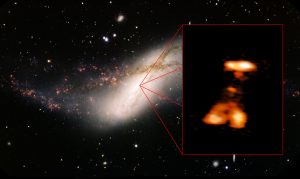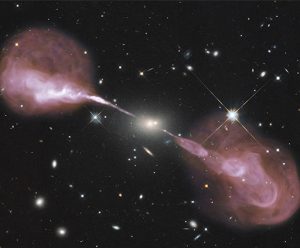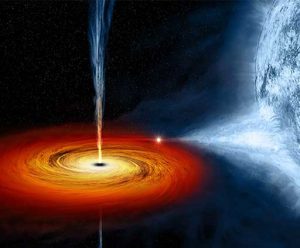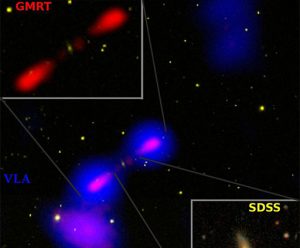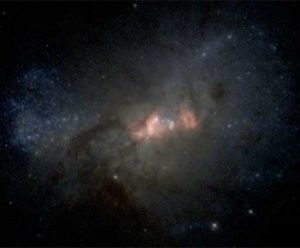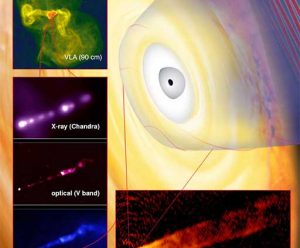The surprising discovery of a massive outburst in a neighboring galaxy is giving astronomers a tantalizing look at what likely is a powerful belch by a gorging black hole at the galaxy’s center.
Image Release: A Radio-Optical View of the Galaxy Hercules A
Spectacular jets powered by the gravitational energy of a supermassive black hole in the core of the elliptical galaxy Hercules A illustrate the combined imaging power of two of astronomy’s cutting-edge tools, the Hubble Space Telescope’s Wide Field Camera 3, and the recently upgraded Very Large Array radio telescope in west-central New Mexico.
First Complete Description of a Black Hole
For the first time, astronomers have produced a complete description of a black hole, a concentration of mass so dense that not even light can escape its powerful gravitational pull. Their precise measurements have allowed them to reconstruct the history of the object from its birth some six million years ago.
Exotic Galaxy Reveals Tantalizing Tale
A galaxy with a combination of characteristics never seen before is giving astronomers a tantalizing peek at processes they believe played key roles in the growth of galaxies and clusters of galaxies early in the history of the Universe.
Surprise: Dwarf Galaxy Harbors Supermassive Black Hole
The surprising discovery of a supermassive black hole in a small nearby galaxy has given astronomers a tantalizing look at how black holes and galaxies may have grown in the early history of the Universe.
VLBA Locates Superenergetic Bursts
Using a worldwide combination of diverse telescopes, astronomers have discovered that a giant galaxy’s bursts of very high energy gamma rays are coming from a region very close to the supermassive black hole at its core. The discovery provides important new information about the mysterious workings of the powerful engines in the centers of innumerable galaxies throughout the Universe.






